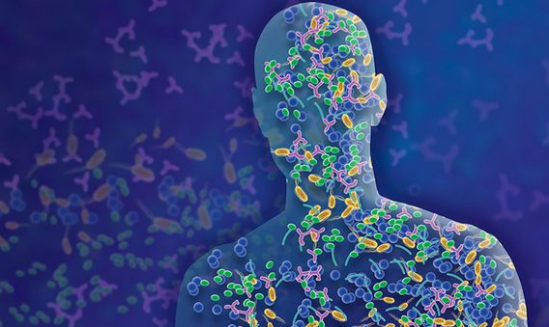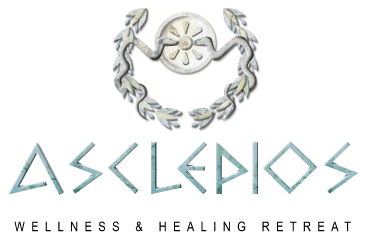



FOOD AS A THERAPY: Prebiotics, probiotics, symbiotics
It is increasingly evident that health depends on what we eat and drink. And this does not exclude the so-called mental pathologies, or autoimmune diseases, or even cancer. Most diseases are not precisely contagious diseases although one could speak of epidemics, they are environmental diseases due largely to bad habits and therefore preventable. Maybe we live longer, but of course we do not live better. More than 70% of our immune responses start in the intestine. That is why it is vital to know how and from what a healthy
microbiota is nourished. At present, one part of the world dies of hunger and another dies intoxicated _little by little-by what they eat. The average human being, inhabitant of the first world is characterized by being overfed and yet malnourished.
It can be said that our basic nutrients are oxygen, water and food. And, unfortunately, today, the problems begin with the first, with the simple act of breathing. People in general breathe superficially and in a certain way incompletely. The real breathing is the diaphragmatic, which involves the diaphragm and the abdominal wall. This breathing is especially beneficial since it involves a continuous massage for the abdominal organs and a stimulus for intestinal motility. In fact, for traditional Chinese medicine, conscious abdominal breathing is the undisputed basis of energy balance and, therefore, health. Regarding water, it is universal knowledge that is very important for our body. By dividing the weight in kilograms of the person by 30, you could know the recommended amount. For ex. If your weight is 60 kilos, you should drink 2 liters (60:30 = 2).
Regarding the subject that concerns us, unfortunately modern food is synonymous with processed food. We are paying for the “evolutionary” fact of having passed in very few generations of hunter-gatherers to be completely disconnected from wildlife. The human diet based on hunting, fishing and gathering consisted of wild plants loaded with pure fiber and without the harmful additions that civilization would bring-and of healthy-fed animals.
Actually, as regards nutrition, in the last four hundred years we have pulverized the natural diet, which has been going on for millennia. The processed food is just the one that most nourishes the worst inhabitants of our intestine.
Rudolph Virchow, a German doctor considered the founder of cell pathology, said: “Pathogens are not the cause of the disease, but seek their habitat” in diseased tissues. In the same way that mosquitoes look for stagnant and rotten water, but they are not the cause of water putrefaction. “
The prebiotics are fiber (garlic, onion, asparagus, dandelion leaves, leeks) and probiotics are ferments (such as pickles, sauerkraut, miso, kombucha …)
The perfect diet to balance the microbiota is one that is rich in prebiotics and probiotics and poor in animal protein and fast sugars. Prebiotics increase our bioavailability of minerals and the production of neurochemicals to name just two interesting points in the very long list of properties.
A diet poor in prebiotics (fiber), probiotics (fermented) and symbiotic (kefir, sauerkraut) promotes the increase in levels of lipopolysaccharides (LPS) in blood. LPS are inflammatory toxins of bacterial origin, a combination of lipids (fats) and sugars whose natural habitat is the intestine, which if filtered in the bloodstream induce a very aggressive inflammatory response that underlies many of the so-called mental illnesses and in an infinity of emotional disorders. (depression).
For a healthy organism it is enough to maintain a balanced diet avoiding processed and harmful foods but at the moment when the discomforts and disorders appear (diarrhea, constipation, swelling, painful gases …), the consumption of these 3 foods can be of great help, as well as supplementation with some products.
Some of the favorite foods of beneficial bacteria:
1- Fresh vegetables and fruits in season: fruits should be eaten in moderation because of their high sugar content and vegetables should be steamed or eaten raw.
2- Nuts: excellent probiotics and increase serotonin levels.
3- Sweet potato: besides fiber, it provides beta-carotene.
4- Oats: helps balance the intestinal microbiota.
5- Horchata: without added sugar, it is a good probiotic.
6- Red wine: its polyphenols have anti-aging properties and reinforce microbes friends.
7- Raw honey to sweeten, excellent microbiome food.
8- Healthy fats: cold-pressed coconut oil, olive oil, deep-sea wild fish, avocado, cocoa and seeds. Cholesterol is essential for the brain and its lack is associated with poor cognitive function.
9 – Spirulina algae: Live food that helps with great efficiency to balance the bacterial ecosystem of our intestine and provides a very wide range of nutrients.
10- Kefir: It is a drink that is obtained from fermented milk and contains the socalled Lactobacillus kefiri, capable of successfully facing the very same Helicobacter pylori, also known as the gastric demon.
11- Pickles: Gherkins and chives in vinegar, fermented olives, etc., an excellent source of lactobacillus free of the load of casein and lactose.
12- Sauerkraut: the fermented cabbage contains a large amount of important vitamins and minerals and enzymes that benefit the liver and the pancreas.
13- Garlic, raw onion, ginger, turmeric, cinnamon and pepper that act as natural antibiotics against pathogenic bacteria.
Favorite foods of harmful bacteria:
Wheat: It is not the same to be gluten intolerant as to be celiac. The first ones when they ingest gluten suffer a specific inflammation, the second, they develop an autoimmune reaction against the gluten that damages the intestine.
Sugar: Sugar works as a sort of fertilizer for harmful bacteria (and for fungi and yeasts) while inhibiting the development of beneficial ones.
Marisia Jiménez, N.D.
Based on the book by Camilla Rowland
